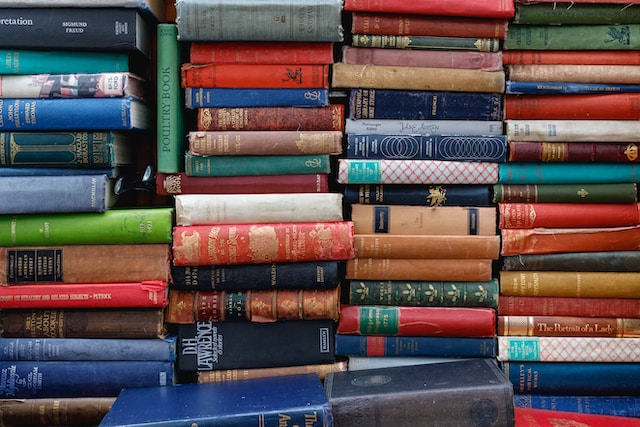Books have long been regarded as gateways to knowledge, culture, and history, with many rare volumes offering a window into the past. The most unique and rare book collections in the world hold significant value, not only for their scarcity but also for their ability to illuminate important moments in human development. These collections are often housed in prestigious libraries, private collections, or museums, safeguarding texts that may be centuries old, written by influential figures, or produced in extremely limited quantities. Whether they are ancient manuscripts, first editions, or works with historical importance, these books have an unmatched allure for scholars, collectors, and bibliophiles alike.
Exploring these rare collections opens up a world of discovery, where each book tells its own fascinating story. From the iconic Gutenberg Bible to the works of Shakespeare, these collections preserve humanity’s intellectual legacy and provide insight into the evolution of language, literature, and culture. While the acquisition and preservation of such rare volumes require significant effort and resources, the result is a cultural treasure trove that continues to captivate researchers and the general public. The value of these books extends beyond their monetary worth, symbolizing our collective heritage and the enduring importance of preserving the written word.
Overview of Unique and Rare Book Collections
Unique and rare book collections embody an extraordinary wealth of history, artistry, and knowledge, representing some of the most significant cultural treasures across the globe. These collections often consist of materials that are rare due to their age, the uniqueness of their content, their association with historic events, or their origins in the workshops of renowned printers and binders. Many collections include first editions, signed copies, manuscripts, books with unique bindings, and volumes that were limited in print.
The libraries that house these collections, such as The British Library in London, the Library of Congress in Washington D.C., and the Vatican Library in Vatican City, serve as guardians of history. Each book in these collections has been meticulously collected for its ability to contribute to the overarching tapestry of human knowledge and achievement. For instance, the Gutenberg Bible, the first major book printed using mass-produced movable metal type in Europe, marks the start of the age of the printed book in the West. Similarly, Shakespeare’s First Folio is crucial for having preserved many of the Bard’s plays that might otherwise have been lost.
These collections are not merely academic resources; they are public treasures that offer insights into the social and personal histories of their times. They also continue to inspire new generations of readers, writers, and historians. The care and maintenance of these collections involve a combination of traditional preservation techniques and modern technology to ensure that they endure for future generations. As such, these unique and rare book collections are invaluable for the preservation of cultural heritage and the continued study of the literary and historical foundations of modern civilization.
Famous Rare and Unique Book Collections Around the World
Rare and unique book collections around the world serve as invaluable repositories of human history, art, and science. These collections are often housed in some of the world’s most revered libraries and institutions, where they are meticulously preserved and made accessible to scholars and the public. Here are some of the most famous among them:
- The Library of Congress (USA) – As the largest library in the world, the Library of Congress boasts an extensive collection of rare books, including one of the three perfect vellum copies of the Gutenberg Bible known to exist. Its Rare Book and Special Collections Division contains nearly 800,000 books, broadsides, pamphlets, theater playbills, title pages, prints, posters, photographs, and medieval manuscripts.
- The British Library (UK) – Home to the Magna Carta, the Lindisfarne Gospels, and two 1455 Gutenberg Bibles, the British Library is one of the world’s most significant repositories of rare books. Its collection also includes the world’s earliest dated printed book, the Diamond Sutra, printed in 868 AD.
- The Bodleian Library (Oxford, UK) – Oxford University’s Bodleian Library is one of the oldest libraries in Europe and holds over 13 million printed items. Among its treasures are four copies of the Magna Carta and Shakespeare’s First Folio from 1623.
- The Vatican Library (Vatican City) – Established in 1475, the Vatican Library holds one of the world’s most extensive collections of historic texts, including the Codex Vaticanus, one of the oldest copies of the Bible. The library’s collection encompasses about 1.1 million printed books, including 8,500 incunabula (printed books from before 1501).
- The Morgan Library & Museum (New York, USA) – Originally the private library of financier Pierpont Morgan, the Morgan Library & Museum houses important manuscripts, early children’s books, and materials from authors like Jane Austen and Charles Dickens. Its collection includes three Gutenberg Bibles and original manuscripts of Mozart and Beethoven.
- Bibliothèque nationale de France (France) – The national library of France contains one of the most extensive collections in the world. The library’s treasures include the papyrus scrolls of ancient Egypt, the manuscripts of Montesquieu and Pascal, and original pages from Marie Curie’s notebooks.
The Future of Rare and Unique Book Collections
The future of rare and unique book collections lies in a delicate balance between traditional preservation techniques and the integration of modern technology. As the world becomes increasingly digital, institutions are facing the challenge of ensuring the survival of these invaluable books while making them accessible to a global audience. Technology plays a vital role in this transformation, allowing rare books to be digitized and archived, thus extending their life span and making them available online. Initiatives like digital libraries and virtual exhibitions have already begun to provide wider access to these treasures, allowing individuals from around the world to explore rare collections without the need for physical interaction.
However, despite the advancements in digital archiving, the physical preservation of these books remains a priority. Advanced conservation techniques, including climate-controlled storage and special preservation treatments, are essential to protect the delicate pages, bindings, and ink of these irreplaceable texts. Additionally, there is growing concern about the environmental impact on books due to pollution, climate change, and fluctuating humidity, prompting institutions to invest in more robust preservation methods. While digital formats ensure longevity in one sense, there remains a deep value in physical books as they offer unique insights into history, culture, and the art of bookmaking.
Conclusion
Exploring the most unique and rare book collections in the world offers a fascinating journey into the depths of human history, culture, and intellectual achievement. These collections, often housed in prestigious libraries and museums, represent a wealth of knowledge that has shaped the course of civilization. Whether they contain ancient manuscripts, first editions, or rare artifacts, these books are not just physical objects—they are windows into the past, preserving stories, ideas, and innovations that have influenced societies across centuries.



